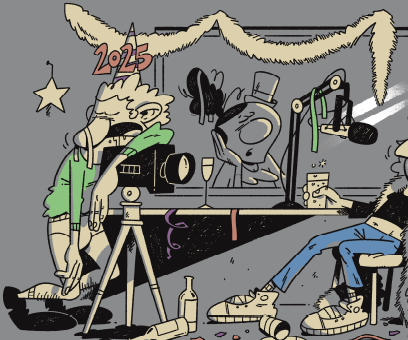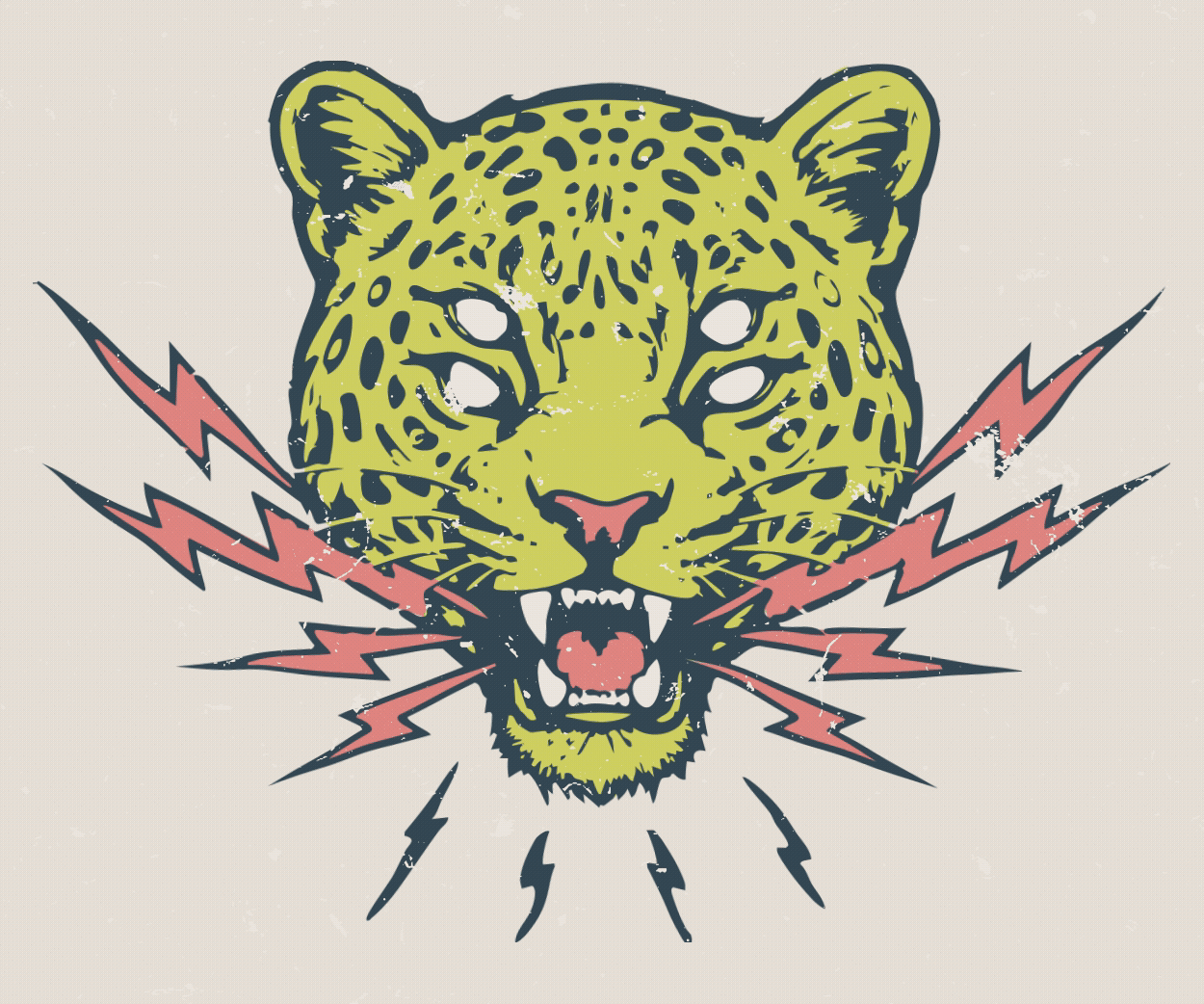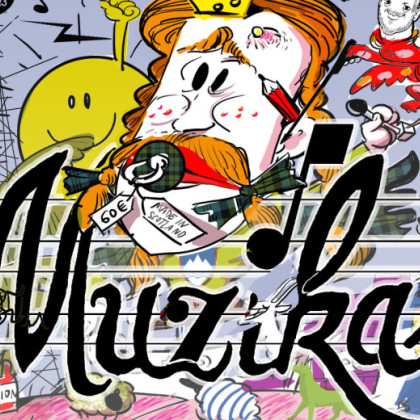Exhibition #vstopilSEM
YOUTH MILESTONES AND TRANSITIONS; Exhibition #vstopilSEM (I entered)
Hello, I am a student – Gašper Stojc, at the University of Ljubljana, specialty Etnhnology and Cultural Anthrology and I am here with you today to discuss/present/talk about/ take you on a little journey through youth and the milestones and transitions characteristic to different generations and our in particular.
The reason I am going to talk about that is an exhibition me and my collegues made at the Slovenian Ethnographic museum this month as part of one of our practical courses.
A few facts about it: we are the first generation of students at our department who had the privilege to develop and realize such a project. The idea of the exhibition was a consequence of the cooperation between our department with the Slovenian Ethnographic museum and our project is actually a paralel to another exhibition called »Vrata«, which means »The door«. Also, our exhibition is made in such a way so it would be easily understood by all the generations, although the main focus is youth today. And finally, the exhibition is really personal itself – through our photos or items we present personal events that we see as milestones or transitions for ourselves. We try to provoke the visitors to find meanings for themselves and possibly to extract what is important to them; to become aware of the diversity of perspectives in terms of understanding transitions; and for those who are not our age to find the differences that occured between the generations. And not to forget – you can see the exhibition until September and the tickets for students are for free.
But why did we choose this topic and what is the meaning of the title of the exhibition?
Since we are students of anthropology and the idea of the exhibition follows anthropological trends I will give a little reflection on this field. Anthropology is the study of what makes us human. Through their aproach anthropologists try to understand different aspects of the human experience, which we call holism. One of the most important aspects that anthropology focuses on is the transition of one phase to another in individuals' lives and in the society as well.
A transition that leads to further change and marks the formation of something new, which can variate in character. So, this concept can be found in the titles of the two exhibitions – »Vrata« (the Door) - the one preceding ours, and »VstopilSem« (I entered). I entered from one period to another and in between are symbolic doors that open the way to changes in life. However, our ideas are focused on our society, since we are aware that the way youth is perceived varies from culture to culture and we cannot claim that the our examples are accurate in meaning to other cultures. I would also like to point out a view of a high school philosophy teacher and a speaker on our opening night, Sandi Cvek, who exposed that usual a bigger transition in life is a rejection of passage, decline of going through the door that everybody went through.
Anyways, youth culture forms itself in acordance to certain trends that every individual chooses to follow. But these trends differ from generation to generation. What is more, the changes in the society in general influence the interests and somehow dictates in what direction the adolescents' transitions could possibly go. Now, let's turn our look to some examples in the past.
To begin with, the late Seventies are a period characterized by the occurance of the so called 'Baby slump' in the UK caused by poor economic conditions and more widespread family planning. At the time when the children of the late 70s were already entering the adolescence the demographic shift was seen to have a big impact on crime statistics and educational system, but the biggest attention was payed on commerce, where the shift was seen 'to carry huge implications for businesses and economic policy'. And this generation was perceived to be more susceptible to influence by fashion trends, to be lovers of brands, and so on. Adding in other factors such as increasing youth uneployment and higher tuition fees on the one hand, and the decrease of the number of young people on the other, were possible problems to youth magazines and clothing retailers. And this can be accepted as true at least for the last 50 years.
In Britain, since the late 1950s, the close connection between consumerism and youth is caracterisic for and major part of the economy. This is the time when the figure of 'teenager' was created and 'The Teenager Consumer' – an influential report by Mark Abrams was published. In his report Abrams writes about the first post-war baby boom – a period of high youth wages and the appearance of the first rock 'n' roll wave. He itemized a variety of products, such as magazines, drinks, records, clothing, and cosmetics and concluded all that as: 'a distinctive teenage spending for distinctive teenage ends in a distinctive teenage world'.
The term teenager comes from the US and started to be popular even earlier - in the 1930s, but American-style consumerism started to pervade British youth life as well as other European countries a little bit later. All this worked as a response to the demographics as well as developments in young culture.
Interesting is what was happening in the US during the 1930s when young people where more of a problem than seen as a market. It was the time of The Depression in Europe and political polarization caused by it. Roosvelt's Democratic government at that time was conscious about what was going on and through different programs tried to keep adolescents in schools or federal projects. As a result of this was the further grow in popularity of peer group culture, which began to tie up and spread swing culture on nation-wide level.
After the hot jazz in the 1920s, swing brought a complete new lifestyle package – with own different clothes, language and dances. In Europe it was before the war when swing was popular in countries like France, England and Nazi Germany and it actually was a progressive American import. This was a new kind of a democratic consumerism, which was playing the role of an 'exit' for those caught between Fascism and Communism.
The 1940s in America are characterized by convulsive changes that affected young people. The appearance of different movements, such as zoot suit riots in Los Angeles, Detroit race riots, various street gangs and others, though some of this was a more or less media hype, caused the mobilization of millions of people to join the war industries. The main wartime events were the frantic scenes at Frank Sinatra concerts and the really fast success of a woman magazine called »Seventeen«, which talked directly to its readers and it was the main promoter of teen products, articles about democracy, or tips connected to dealing with parents.
In autumn 1944 the term 'teenager' was already generally used. The youth model included pleasure seekers who lived in the moment and traveled around the destroyed Europe, and commited consumers which role was to dictate the market. In this, a big part of the young people could find some hope for the future.
All these basic examples from the past provide an image of how trends work and how youth tend to response to them. Although the ideas differ from generation to generation certain patterns of similarities in response could be seen. If we talk about today, pop culture, once considered peripheral – is now completely part of all levels of society. One may claim that today youth has lost their exclusiveness to some point, but on the other hand if we compare to the 60s and 70s the relationship between generations nowadays is much easier and possible.
The way media presents youth today is either by idealising it or the opposite. Nonetheless, we should not forget that there is a difference between the social construction and the biological state of adolescence. It/there comes the point when young pull away from our families and start to enter the world, which was not primarily created by us. We begin to form what is wrong and what is right alone, having our own consciousness and looking for ways that changes can occur, thus assuring our future.
That idea was presented by us in our exhibiton, which was separated into 3 parts. The first one – »Z vami« or »with you« is focused on transitions and milestones that happened to us while being surrounded by family and in a way dependent, since the 2nd part is »Us« or »z nami«, entering the world, experiencing and building up our own views and opinions. The 3rd section seals up the process of making the exhibiton and works itself as an transition and milestone, presenting youth in action when some point of freedom for expression is given to them. And finally, the three parts build a whole, which is characterised by holism – the intimate interconnection of the parts that cannot be understood or exist independently from the whole.
That is our exhibition, different rites of passage, different milestones can be held responsibile for different personalities. With our exhibition we wanted people to realise that they are the ones creating their own life, even if some milestones were given to them by society, like prom,... it doesn't mean they cannot make their own , for example a passage to a self reliant community. Bassically the whole exhibition is a rite of passage for the 11 students who worked on it and created their first impact in the world of museums.









Dodaj komentar
Komentiraj